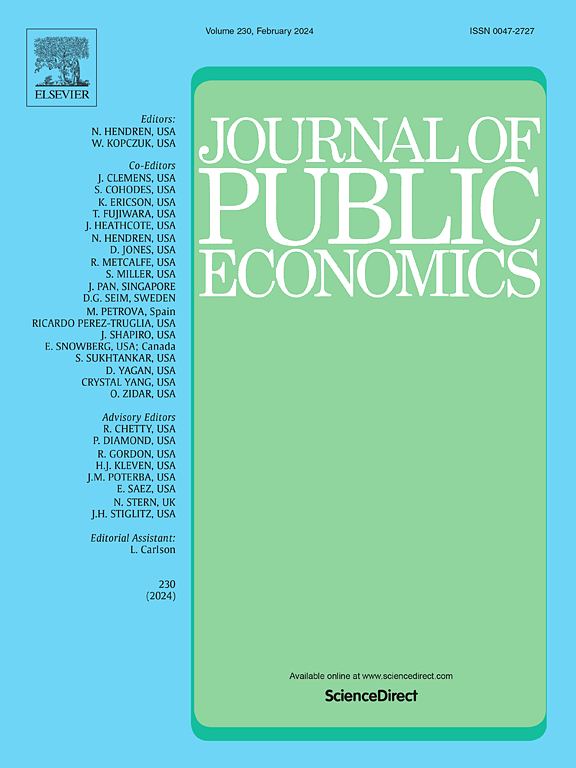Correlation in state and local tax changes
IF 4.8
1区 经济学
Q1 ECONOMICS
引用次数: 0
Abstract
Empirical research in public economics, including our own, often uses variation in state and local taxes as an empirical laboratory to estimate causal relationships. A key concern is that other taxes might change at the same time. To assess this concern, we develop a dataset of state (1977–2022) and local (2000–2022) tax rates and revenue from personal income, corporate income, property, sales, and excise taxes. This new dataset generates two key results. First, we find that taxes of different types tend to co-move within a jurisdiction: a tax change of one type can more than double the likelihood of a second tax type changing in the same year. Local tax changes also co-move with tax changes enacted by the state they are located in. This positive correlation can upwardly bias elasticity estimates, but only moderately. For example, regressing state economic outcomes on the full set of state tax changes yields elasticities that are about 10%–30% smaller than those obtained from using a single tax type in isolation. Second, we document that the mix of taxes across state and local jurisdictions is very different, and that these differences have become more pronounced over time as jurisdictions have increasingly become reliant on the single tax type — sales, personal or corporate income tax — that was most prominent for them in the earliest part of our sample.
州和地方税收变化的相关性
公共经济学的实证研究,包括我们自己的研究,经常使用州和地方税收的变化作为实证实验室来估计因果关系。一个关键的担忧是,其他税种可能同时发生变化。为了评估这一问题,我们开发了一个州(1977-2022)和地方(2000-2022)税率和个人收入、企业收入、财产、销售和消费税收入的数据集。这个新数据集生成两个关键结果。首先,我们发现不同类型的税收倾向于在一个管辖范围内共同移动:一种税收类型的变化可以使同一年内第二种税收类型变化的可能性增加一倍以上。当地税收的变化也与他们所在州颁布的税收变化同步。这种正相关可以向上偏向弹性估计,但只是适度的。例如,对一整套州税收变化的州经济结果进行回归,所产生的弹性比单独使用单一税收类型所获得的弹性小10%-30%。其次,我们记录了州和地方司法管辖区的税收组合非常不同,随着时间的推移,这些差异变得更加明显,因为司法管辖区越来越依赖单一的税收类型——销售、个人或企业所得税——这在我们样本的早期部分对他们来说是最突出的。
本文章由计算机程序翻译,如有差异,请以英文原文为准。
求助全文
约1分钟内获得全文
求助全文
来源期刊

Journal of Public Economics
ECONOMICS-
CiteScore
14.10
自引率
2.00%
发文量
139
审稿时长
70 days
期刊介绍:
The Journal of Public Economics aims to promote original scientific research in the field of public economics, focusing on the utilization of contemporary economic theory and quantitative analysis methodologies. It serves as a platform for the international scholarly community to engage in discussions on public policy matters.
 求助内容:
求助内容: 应助结果提醒方式:
应助结果提醒方式:


